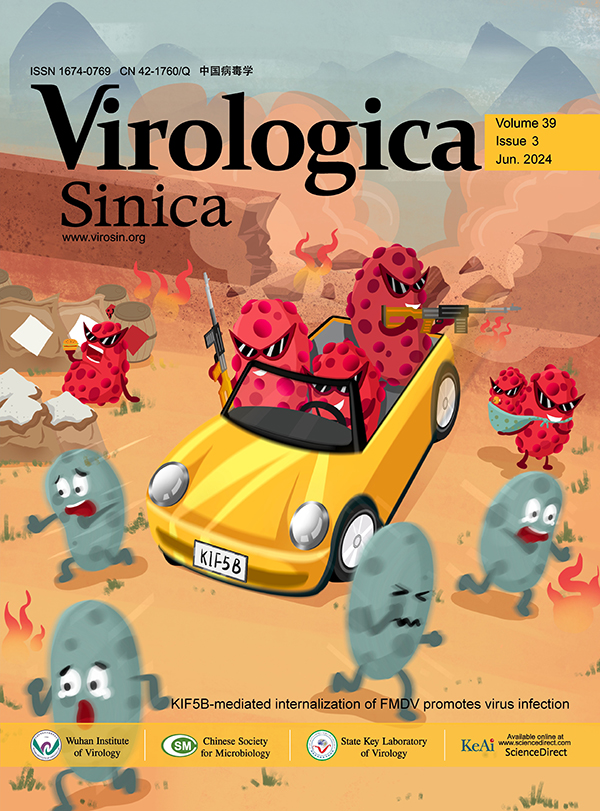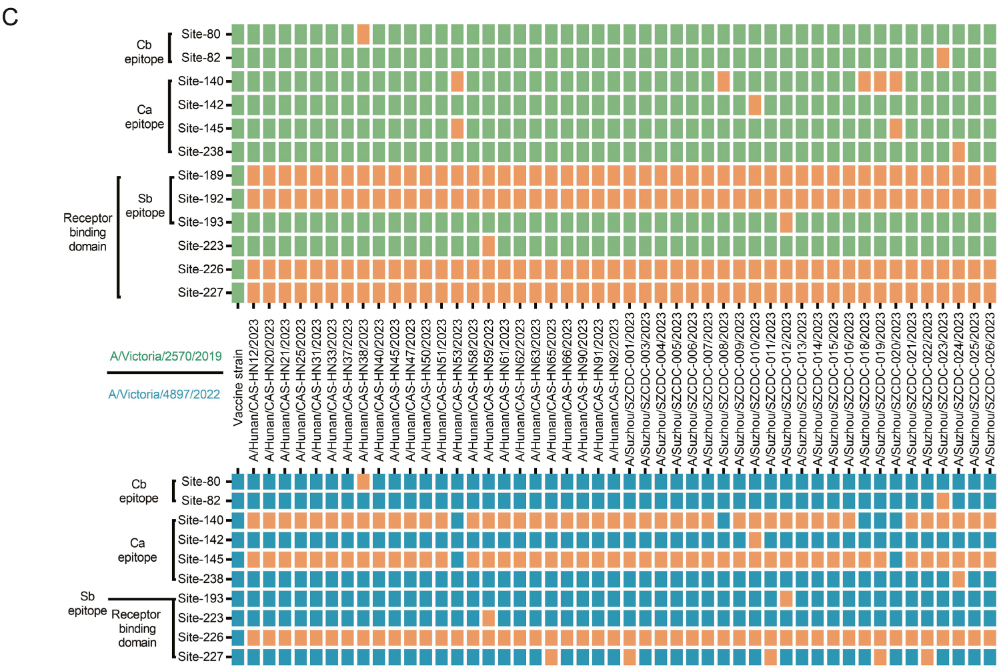-
Bi,Y., Chen, Q., Wang, Q., Chen, J., Jin, T., Wong, G., Quan, C., Liu, J., Wu, J., Yin, R., Zhao, L., Li, M., Ding, Z., Zou, R., Xu, W., Li, H., Wang, H., Tian, K., Fu, G., Yu, H., Alexander, S., Li, S., Xu, B., Yu, H., Luo, T., Lu, X., Xu, X., Luo, Y., Liu, Y., Shi, W., Liu, D., Gao, G.F., 2016. Genesis, evolution and prevalence of H5N6 avian influenza viruses in China. Cell Host Microbe 20, 810-821.
-
Bi, Y., Li, J., Li, S., Fu, G., Jin, T., Zhang, C., Yang, Y., Ma, Z., Tian, W., Li, J.D., Xiao, S., Li, L., Yin, R., Zhang, Y., Wang, L., Qin, Y., Yao, Z., Meng, F., Hu, D., Li, D., Wong, G., Liu, F., Lv, N., Wang, L., Fu, L., Yang, Y., Peng, Y., Ma, J., Sharshov, K., Shestopalov, A., Gulyaeva, M., Gao, G.F., Chen, J., Shi, Y., Liu, W.J., Chu, D., Huang, Y., Liu, Y., Liu, L., Liu, W., Chen, Q., Shi, W., 2020. Dominant subtype switch in avian influenza viruses during 2016-2019 in China. Nat. Commun. 11, 5909.
-
Hay, A.J., Gregory, V., Douglas, A.R., Lin, Y., 2001. The evolution of human influenza viruses. Phil. Trans. Roy. Soc. Lond. B 356(1416), 1861-1870.
-
Kimura, M., 1980. A simple method for estimating evolutionary rates of base substitutions through comparative studies of nucleotide sequences. J. Mol. Evol. 16, 111-120.
-
Liu, M., Liu, J., Song, W., Peng, Y., Ding, X., Deng, L., Jiang, T., 2023. Development of PREDAC-H1pdm to model the antigenic evolution of influenza A/(H1N1) pdm09 viruses. Virol. Sin. 38, 541-548.
-
Mohan, T., Nguyen, H.T., Kniss, K., Mishin, V.P., Merced-Morales, A.A., Laplante, J., St George, K., Blevins, P., Chesnokov, A., De La Cruz, J.A., Kondor, R., Wentworth, D.E., Gubareva, L.V., 2021. Cluster of oseltamivir-resistant and hemagglutinin antigenically drifted influenza A (H1N1) pdm09 viruses, Texas, USA, January 2020. Emerg. Infect. Dis. 27, 1953-1957.
-
Naffakh, N., Werf, S.V.D., 2009. April 2009: an outbreak of swine-origin influenza A (H1N1) virus with evidence for human-to-human transmission. Microb. Infect. 11, 725-728.
-
Novel Swine-Origin Influenza A (H1N1) Virus Investigation Team, 2009. Emergence of a novel swine-origin influenza A (H1N1) virus in humans. N. Engl. J. Med. 360, 2605-2615.
-
Olsen, S.J., Winn, A.K., Budd, A.P., Prill, M.M., Steel, J., Midgley, C.M., Kniss, K., Burns, E., Rowe, T., Foust, A., Jasso, G., Merced-Morales, A., Davis, C.T., Jang, Y., Jones, J., Daly, P., Gubareva, L., Barnes, J., Kondor, R., Sessions, W., Smith, C., Wentworth, D.E., Garg, S., Havers, F.P., Fry, A.M., Hall, A.J., Brammer, L., Silk, B.J., 2021. Changes in influenza and other respiratory virus activity during the COVID-19 pandemic-United States, 2020-2021. MMWR Morb. Mortal. Wkly. Rep. 70, 1013-1019.
-
Palese, P., 2004. Influenza: old and new threats. Nat. Med. 10(Suppl. 12), S82-S87.
-
Razzaghi, H., Srivastav, A., Perio, M.A., Laney, A.S., Black, C.L., 2022. Influenza and COVID-19 vaccination coverage among health care personnel-United States, 2021-22. MMWR Morb. Mortal. Wkly. Rep. 71, 1319-1326.
-
Sooryanarain, H., Elankumaran, S., 2015. Environmental role in influenza virus outbreaks. Annu. Rev. Anim. Biosci. 3(1), 347-373.
-
Whitley, R.J., Boucher, C.A., Lina, B., Nguyen-Van-Tam, J.S., Osterhaus, A., Schutten, M., Monto, A.S., 2013. Global assessment of resistance to neuraminidase inhibitors, 2008-2011: the influenza resistance information study (IRIS). Clin. Infect. Dis. 56, 1197-1205.
-
Wilson, I.A, Skehel, J.J., Wiley, D.C., 1981. Structure of the haemagglutinin membrane glycoprotein of influenza virus at 3 A resolution. Nature 289(5796), 366-373.
-
World Health Organization (WHO), 2023a. Influenza Laboratory Surveillance Information. [accessed 13 June 2023; Available from: https://www.who.int/tools/flunet.
-
World Health Organization (WHO), 2023b. Recommended Composition of Influenza Virus Vaccines for Use in the 2023-2024 Northern Hemisphere Influenza Season. [accessed 13 June 2023; Available from: https://www.who.int/publications/m/item/recommended-composition-of-influenza-virus-vaccines-for-use-in-the-2023-2024-northern-hemisphere-influenza-season.
-
Xu, H., Palpant, T., Weinberger, C., Shaw, D.E., 2022. Characterizing receptor flexibility to predict mutations that lead to human adaptation of influenza hemagglutinin. J. Chem. Theor. Comput. 18, 4995-5005.
-
Yang, J., Gong, Y., Zhang, C., Sun, J., Wong, G., Shi, W., Liu, W., Gao, G.F., Bi, Y., 2022. Co-existence and co-infection of influenza a viruses and coronaviruses: public health challenges. Innovation. 3, 100306.














 DownLoad:
DownLoad: